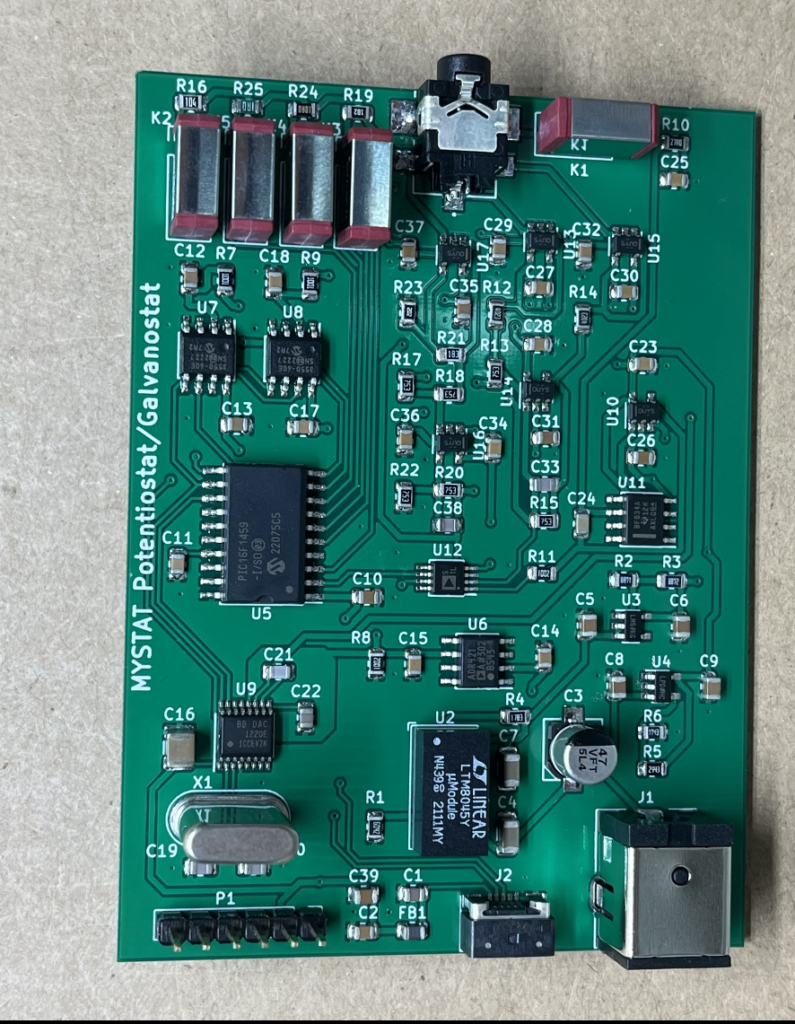A few months ago, the potentiostat I was using for my battery cycling experiments got damaged with some liquid. The previous potentiostat I used was described in this post. Since a few years have passed since this potentiostat came out, I decided to look at the literature and find any other implementations that might have improved on that previous design. This is how I found the Mystat design, which was published in this paper.

The Mystat design features many important improvements on the previous design. It has a larger potential range from -11 to 11V and it supports current values up to 200 mA. It also doesn’t lose any of its low range current capabilities, still being able to measure currents in the nA range. The Mystat also allows for easy connection of electrodes using a “headphone jack type” adapter and uses an external 15V power supply instead of relying on the computer’s USB supply for all its energy needs.
I used PCBWay for the fabrication and assembly of the device and decided to create a shared project so that anyone interested can have their own manufactured. You can use that link to buy your own fully assembled potentiostat. The total cost for the potentiostat was around 330 USD, including the power supply and cables that need to be bought separately (links for that are included in the shared project description).

The best thing is that the potentiostat uses the exact same python software as my old potentiostat, so I was able to use a lot of the coding modifications I had done to improve my battery characterization. You can obtain my updated code here, which allows you to do battery cycling experiments charging to a final capacity or to a final potential and includes an additional display for the uAh measurement in the current cycle.
Pingback: Setting up the MYSTAT potentiostat for development – Dual Power Supply
I was hoping we could talk. I am looking for help/consulting on getting this device working for my application (AdCSV) and perhaps extending it a little. Pease let me know if that is something you would be interested in. Thank you.
Thanks for writing! Sure, sounds very interesting. I’ll send you an email so that we can talk further.